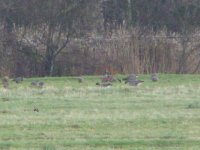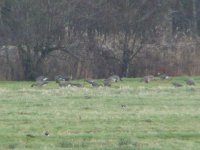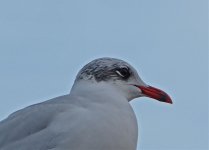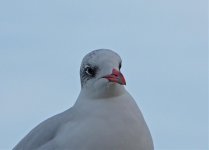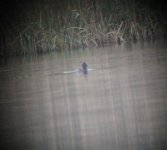For what it is worth Dantheman and I caught up with the Lesser WF Goose this afternoon at Buckenham. It was with around 77+ Taiga Bean Geese, rather distantly viewable from the path that runs up to the hide at Buckenham Marshes.
It was too far to see the eye-ring, but the small size, large white shield and small bill were clearly visible. Just wondering how good the views were yesterday and if the eye-ring was seen well enough to eliminate the hybrid that has been in the Yare Valley. The odd looking all dark goose was also there and does appear to be a Barnacle x Red-breasted hybrid. I assume the Baracle there are plastic fantastic.
There were good number of Whitefront at Cantley with at least 230 birds counted, along with 150 or so Pinkfeet. We also saw 500+ Pinkies at Limpenhoe and 5000+ along the A47 close to the Halvergate turn-off, but no sign of any Ross's Geese.
We also had 2 Peregrine, Bittern and Barn Owl at Buckenham, but no Short-eared Owl or Hen Harrier. The other highlights were 8 Bewick's Swan along the approach road to Halvergate and the very confiding female Ring-necked Duck at Ranworth, swimming around the visitor's centre.
Finally of interest is the large number of redpoll (c50) in with Siskin (c50) along the boardwalk at Ranworth, with only Lesser being seen, but Mealy or something better maybe possible for someone with more time to grill them.
Cheers
Sean
PS Love the quiz






